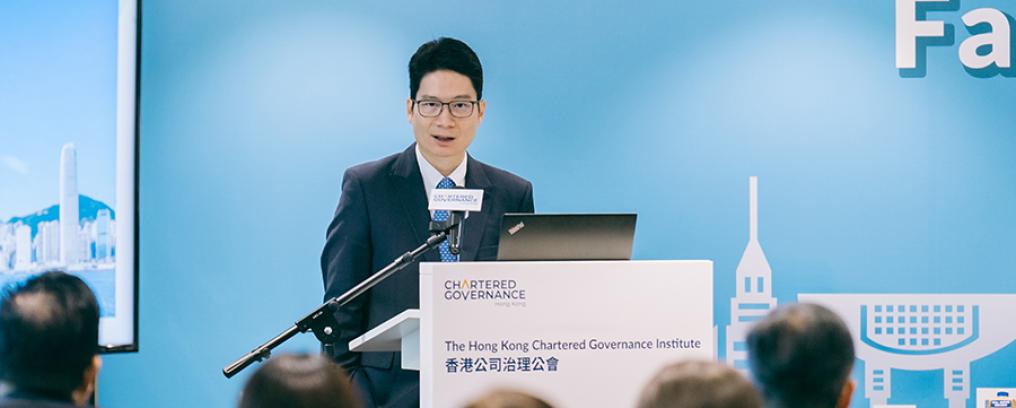Alexandra Tracy, President, Hoi Ping Ventures, asks whether Asia’s burgeoning carbon markets are providing meaningful contributions to reducing carbon emissions in the region and looks at how they could do better.
Highlights
- Asia’s largest economies have been experimenting with mandatory carbon emissions trading schemes for a number of years, but the pace of development has been measured, at best
- voluntary carbon markets can potentially fill the gap, but these have been plagued by a lack of transparency, high transaction costs and a lack of trust in the quality of carbon offsets
- the future of voluntary carbon markets may lie in greater convergence with mandatory carbon markets and greater regional consolidation
In July 2021, Mainland China made history with the launch of its long-awaited national Emissions Trading Scheme (ETS), becoming the world’s largest carbon market and covering nearly 15% of global emissions. Analysts predicted that the ETS could help the Mainland reduce carbon emissions by 30%–60% by 2060, the date by which the country has pledged to reach carbon neutrality.
Later in the same year, Climate Impact X (CIX), one of Asia’s first voluntary carbon marketplaces, conducted its initial auction of nature-based carbon credits in Singapore. Global voluntary carbon markets could reach up to US$40 billion in value by 2030, according to the Boston Consulting Group and Shell, with Asia making up as much as US$10 billion, mostly in forestry and nature-based credits.
Following the Paris Agreement of 2015, which laid out international carbon emissions goals, there has been increasing pressure on governments and businesses in Asia to reduce their carbon footprints. Are the burgeoning carbon markets in the region providing a meaningful way forward to achieving this, and how could they do better?
Compliance markets have been slow to develop
Compliance markets, or regulatory markets, in Asia are governed by ‘cap and trade’ regulations set by national authorities. Each company operating under a cap and trade programme is issued a certain number of carbon credits each year, giving them permission to generate carbon emissions up to a limit – the cap. The idea of the programme is that the regulator will slowly decrease the cap over time, pushing businesses into decarbonising their operations in order to stay beneath the cap, or buying credits from low-emitting companies to offset their own continuing emissions. In these markets, businesses are participating because they are mandated by governments to do so.
Asia’s largest economies have been experimenting with cap and trade programmes in some form for a number of years, but the pace of development has been measured, at best.
The Tokyo Metropolitan Government launched Japan’s first mandatory ETS in 2010, which was a city-wide scheme that covered large buildings, factories, heat suppliers and other facilities consuming large quantities of fossil fuels. This programme has been generally viewed as a success, but has yet to evolve into a compliance market covering the whole country, which is the world’s fifth-biggest carbon emitter. The government has recently announced the introduction of a carbon pricing scheme in stages, followed by the establishment of a national ETS, initially on a voluntary basis, followed by full operation some years later.
Similarly, South Korea has operated a domestic ETS since 2015, covering industries such as power and aviation, which was, at its inception, the second-largest carbon market after the European Union ETS (EU ETS). However, for some years, trading has been relatively limited, with buyer concerns about oversupply of free credits and price fluctuations. Korean Allowance Units in the ETS saw their prices drop about 20% in the first four months of 2023, according to data from the Korea Exchange.
The Mainland’s market is also seeing a slower build out than was originally forecast. Carbon price and trading volume were both well below target in the first year of operation. The ETS now covers around 2,200 power companies, but was initially expected to expand to include the cement and aluminium sectors in 2022, and to cover all eight of the Mainland’s biggest carbon emitting sectors – power generation, oil refining, chemicals, steel, building materials, non-ferrous metals, paper and aviation – by 2025. Expansion has been delayed while regulators review guidelines and systems for emissions accounting and verification.
Can voluntary markets fill the gap?
Additional compliance markets are under development in the region (for example, in Indonesia, where the government recently launched the first phase of mandatory carbon trading for coal-fired power plants), but analysts say that regulated carbon markets have proven costly and time consuming to set up, while the lack of a broader United Nations (UN) framework for regulated exchanges impedes progress on international cooperation.
Voluntary carbon markets (VCMs) are going some way towards filling the gap. Here, businesses and individuals can buy credits (of their own accord) to offset their carbon emissions, while carbon reduction and environmental projects can raise capital by generating and selling credits. For companies in ‘hard to abate’ industry sectors, such as oil and gas, heavy manufacturing, aviation, shipping or transportation, this creates an opportunity to invest in projects that avoid or remove emissions, thereby indirectly offsetting emissions from their own operations. In many cases, these may be companies operating where cap and trade programmes do not yet exist.
Projects in the forestry and nature-based sectors, in particular, have enormous potential to act as suppliers of carbon credits through VCMs in Asia. Malaysia and Indonesia have 55% and 53% forest cover respectively, followed by Vietnam at 47%. Such high forest coverage creates significant opportunity for the generation of carbon credits, as forestry-related activities (forest management, afforestation and conservation) are currently the world’s largest source of carbon credits. In addition, Southeast Asia has the highest mangrove coverage in the world and considerable potential for marine-related carbon projects.
Growth pains in the VCMs
In addition to Singapore’s CIX, additional VCMs have begun operating recently elsewhere in Southeast Asia. FTIX, Thailand’s new carbon trading platform launched by the Federation of Thai Industries, has been offering trading services for carbon credits, renewable energy and renewable energy certificates since the beginning of the year, while Malaysia’s Bursa Carbon Exchange (BCX) completed its first round of carbon credit auctions in March 2023. In Hong Kong, a trading platform for voluntary carbon credits, Core Climate, was launched by Hong Kong Exchanges and Clearing Ltd (HKEX) in late 2022.
Despite the recent flurry of announcements, VCMs in Asia still face significant challenges in attracting investors at scale. Carbon credits offered by these exchanges, which are generated by activities as diverse as renewable energy, distribution of cook stoves, forestry projects and avoided deforestation, sustainable farming or preserving landscapes and coastlines, are not standardised. Collecting data from these projects can be difficult, the methodology for verifying the credits is not consistent and the benefits are often not well defined.
Much has already been written elsewhere about the problems that are still plaguing these nascent markets. Lack of clear definitions around standards and the resulting poor quality of some offsets, lack of transparency and high transaction costs undermine investor trust in VCMs and cause them to be cautious about participating. Greater uncertainty was created earlier this year by severe media scrutiny of the world’s largest certifier of carbon credits, the non-profit Verra, which faced claims of having vastly overestimated the climate impact of forest projects it had validated. Moreover, potential investor appetite was further undermined in May, when Delta Air Lines became the target of a proposed class action suit in the US, alleging that it had been buying carbon offsets that are largely worthless.
Why are trading volumes low?
A lack of confidence in VCMs, which keeps investors mostly on the sidelines, means that these markets will continue to lack the liquidity necessary for efficient trading and price discovery. A few months after its launch, BCX in Malaysia, for example, has seen very disappointing levels of participation. Ten buyers participated initially, when trading began in September, exchanging 16,500 carbon credit units in the first two days, but volumes subsequently fell substantially, with some days seeing no trading at all.
Some experts estimate that it will take at least four to five years for Southeast Asia’s VCMs to develop sufficient liquidity to support active markets. The more mature CIX in Singapore and Core Climate in Hong Kong, which have both been making progress in signing up buyers to their platforms, report that most trade remains bilateral, rather than via standardised contracts, which play a key role in providing liquidity to the entire market. Due to continuing concerns about quality, investors often prefer to make over-the-counter purchases of credits from individual projects or portfolios of projects that have undergone due diligence by a third party, in addition to the required registry verification process.
Following the debacle around Verra, and another scandal involving South Pole, the world’s leading seller of carbon offsets, there have been considerable efforts this year to improve transparency and create greater investor confidence in the quality of carbon credits on the VCMs. The Integrity Council for the Voluntary Carbon Market (ICVCM) recently released a global benchmark for high-integrity carbon credits, the Core Carbon Principles, developed through consultations with carbon crediting and scientific experts. Many analysts believe that the launch of the benchmark will go a long way towards defining more consistent standards, with other service providers, such as certifier Gold Standard, already announcing that they will update their own rules to align with it.
But not everyone is convinced. The Net Zero Asset Owner Alliance (NZAOA), a group backed by the UN with a collective US$11 trillion of assets under management, has said it will ban its members from using carbon offsets in emissions reduction plans until 2030. Following investor criticisms of businesses that buy carbon credits rather than reducing their own carbon footprints, NZAOA emphasised that it wants its members to focus on encouraging real-world decarbonisation of the operations and supply chains of their portfolio companies.
“for the smaller carbon markets … the future may lie in crossborder and regional collaboration”
Will the future lie in greater convergence between markets?
As prices have languished on many VCMs this year, with considerable price gaps between standardised contracts and over-the-counter credits, some analysts have questioned whether there is a viable future for VCMs and if the solution might lie in allowing them to be partially absorbed into compliance markets. Already, the distinction between voluntary and compliance markets is increasingly blurred, and their activities are becoming more interlinked.
For example, the Singapore government has introduced a mechanism that will allow companies in Singapore to use international carbon credits, traded on VCMs, to fulfil part of their mandatory carbon tax liability. Starting from next year, companies can offset up to 5% of their taxable carbon emissions using carbon credits. Singapore’s carbon tax was introduced in 2019 at S$5 per tonne and is expected to rise to S$25 in 2024.
The Mainland’s voluntary carbon market, the China Certified Emission Reduction (CCER) scheme, which was halted in 2017 due to concerns about quality and transparency, is expected to be relaunched in the near future. The CCER’s regulatory framework has been significantly improved, with stringent guidelines for eligible projects and more streamlined trading and settling of CCER credits. Previously, trading was fragmented across several venues, but once the CCER reopens, China Beijing Green Exchange will be the only platform available, which is expected to improve efficiency and increase liquidity.
The relaunch of the CCER has the potential to reinvigorate carbon trading activity in the country, as companies in the ETS will be able to use CCER carbon credits, generated by renewable energy, forestry, methane capture and energy efficiency projects, to offset 5% of their annual emission obligation – which could be as much as 200 million tonnes annually. This will expand the sector coverage of the Mainland’s existing carbon market and increase overall volumes.
The role of regional consolidation
For the smaller carbon markets that will never individually achieve the scale and liquidity of the EU ETS or the Mainland’s ETS, the future may lie in cross-border and regional collaboration.
HKEX has been explicit about its ambitions to leverage Core Climate to play a greater role in China’s Greater Bay Area, building on HKEX’s experience with the various Connect cross-border trading schemes. Already, Core Climate allows participants to purchase carbon credits in Hong Kong dollars or renminbi, allowing for greater flexibility and potentially reaching a wider range of investors.
In 2022, HKEX signed an agreement with Guangzhou’s China Emissions Exchange to explore the development of a voluntary carbon emissions reduction programme in the Greater Bay Area, and to help boost the internationalisation of China’s carbon market. This was followed earlier this year by a Memorandum of Understanding with China Emissions Exchange Shenzhen to look at opportunities in cross-border carbon market connectivity and climate finance.
For some market watchers in Southeast Asia, the natural way forward would be towards a unified Association of Southeast Asian Nations (ASEAN) carbon market. Almost a quarter of the world’s potential for natural climate solutions is thought to be located in ASEAN, and the creation of a robust regional trading platform could make a material contribution to helping countries to achieve their emissions reduction commitments.
It is unlikely, however, that an ASEAN platform will be established in the near future, given the divergences between different member state economies, the challenges of monitoring, reporting and verification of emissions reduction, and the level of development of individual VCMs in the region. What does seem to be emerging is bilateral agreements between countries which allow carbon credits to be traded internationally and to be counted as part of national emissions reduction commitments under the Paris Agreement rules. For example, Singapore is close to finalising implementation agreements with Ghana and Vietnam, under which Singaporean companies can use international carbon credits generated in those countries to offset their taxable emissions. Singapore is in talks with a number of other Asian countries on similar arrangements.
Alexandra Tracy, President Hoi Ping Ventures
Hoi Ping Ventures provides research and consulting on green finance and sustainable investment in Asian emerging markets. The author is also Head of Research at Carbonless Asia, an investment and innovation business focused on supporting opportunities for decarbonisation in Asia. She is currently Private Sector Observer to the World Bank’s Climate Investment Funds, having for several years served as Active Private Sector Observer to the United Nations Green Climate Fund. She is also a director of RIMM Sustainability Pte Ltd in Singapore and of BlueOnion Group in Hong Kong, both leaders in the ESG data space in the region.
“voluntary carbon markets in Asia still face significant challenges in attracting investors at scale”



